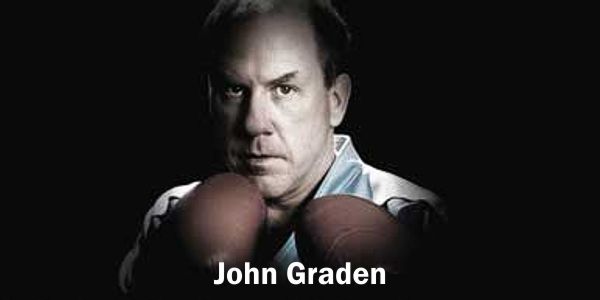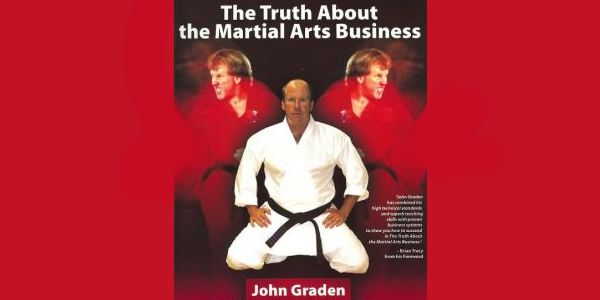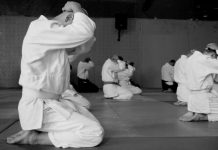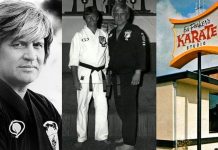 Excerpts from John Graden‘s book The Truth About The Martial Arts Business
Excerpts from John Graden‘s book The Truth About The Martial Arts Business
The Core Dynamics Why we do the things we do and why we often don’t do what we need to do. This is very specific to the martial arts instructor and believe me; this is the only place you will ever get this information.
What I’ve Learned As founder of NAPMA, ACMA, MAPro, and MATA, I’ve been exposed to the good, the bad and the ugly when it comes to running a school. Here I will bring us all up to date on the proven systems of attracting more students, keeping them longer and building wealth for your family.
The Dark Side The inside story of the lawsuit that drove NAPMA into bankruptcy. By John Graden
Trial vs Non-Trial Program Strategies
The trial program, in its many configurations, has been a staple in the martial arts school enrollment process for a very long time. A trial program invited the prospect to come into the school to try anywhere from a single class to a month of classes for free or a small fee. We’re going to look at a few proven trial and non-trial strategies and then discuss the process as it relates to your school.
I have always advocated a two lesson trial program for $19.95 that includes a uniform. Essentially, I’m selling the uniform for $19.95 and providing the two 20-minute lessons as a bonus. I like this process for a number of reasons. People who will pay $19.95 to take two lessons have already pre-qualified themselves for joining. Free lessons often bring shoppers not buyers and people interested in martial arts who do have the means to pay. When people call, we closed the appointment for taking the trial lessons and used a visit to the school as a fall back if they wouldn’t commit to taking the trial lesson course. This has worked hundreds, if not thousands of other schools.
`
In the early 1990s, Rick Bell of EasyPay introduced the Guaranteed Enrollment Tour. This took the student through five stations that presented the benefits of martial arts to the prospect and finished at a custom poster that EasyPay had designed that helped the salesman convey the benefits in pretty emotional manner. The sense of risk for the student was alleviated by a 30-day money back guarantee if the student balked at the financial presentation.
Andrew Wood had a slightly different approach with his Martial Arts America schools. His was a hybrid approach that invited a prospect down to the school to get an eight-page information kit. When the prospect arrived, the instructor invited him to take a trial lesson on the spot. This lesson concluded at the point the instructor felt the student was at his or her height of excitement. This was often a 6 8 minute lesson followed by a presentation into the office for the close.
There is a strategy that has been working for free lessons and it’s been done best by Bill Clark in Jacksonville, FL. His concept is not a new one, but the execution is. The concept is that the only way to join his school is to be recommended or referred by an existing member. That is not a new idea. However, he has taken this to a new level. He requires his staff to go into the community and strike up conversations with prospects in shops, standing in line, walking the sidewalk, in restaurants and anywhere else they might be. The purpose of the conversation is to see if the prospect has any interest in training and then present them with a VIP card, which entitles the prospect with a 30-day trial membership that includes a uniform at no charge. The instructor explains that the school only allows referrals in, so the instructor will refer this new person in.
The strategy is to bring them in and have them take two private lessons that are essentially, the same as any two lesson trial course. After the first or second lesson, depending on how well each went, an enrollment conference is made. The strategy in the conference is offer three options for paying. A high monthly tuition, a slight discounted tuition paid in five months or a single payment with a significant discount. This sounds like a pretty standard presentation strategy with the exception that the instructor then offers to discount the membership further by crediting the value of the VIP pass off of the annual program. So if the annual was $999, the student can reduce that $100 more by signing on that day. You would be amazed how many students will cut you a big check using this strategy.
Tiger Shulmann Karate, arguably the most successful franchise in the industry, currently uses a $79 trial month offer that includes two private lessons and a uniform. Again, the idea is to enroll them after the two lessons.
As you were reading about these strategies, you may have thought, “that’s what I do…” or “that’s a good idea…” Look a little closer. Maybe reread them again and you will notice that some of the largest, wealthiest and most successful martial arts school owners in history use the trial lesson concept. Certainly, Tiger Shulmann and Bill Clark are in that picture and your author has had a pretty good run in this business. This is not to take anything away from Rick Bell and Andrew Wood, but for the most part, they dealt with small schools. Both are excellent salesman and that’s a huge requirement to make any non-trial introductory program work. You have to be able to close someone on a program within 15 – 20-minutes of them walking in the door. Let me tell you, Rick and Andrew could sell. I know Tiger, Bill and myself could as well. I’m not sure our staff could though and I’m not sure all of you could. Selling is fun but not always easy.
The intro tour and the eight-page info book/quickie lesson put the burden of enrolling on salesmanship of the instructor instead of experience of the student. It’s very difficult and a bit intimidating to have to make a decision to join a martial arts school within a half-hour of walking in the door. It’s like getting married without dating first. It’s fast. If you believe that the three dominant learning processes for the human population are divided into visual, kinesthetic and auditory learners, you can be sure the kinesthetic will be hesitant to join without first physically experiencing the classes. That’s one third of your market. The visual learner often needs time to go through your materials to help them get a grasp of what you are offering. That’s another third of you market. The auditory learner may be best suited to listen to your pitch and act.
I’m not saying these are definitive percentages and I don’t believe anyone is 100% one-way or the other. But the fact is that you would not buy a car without driving it first. I like people to know what we teach like before joining. I want high-quality students, not just in terms of their ability to pay but also in their commitment to stay.
John Graden is the founder of NAPMA, ACMA, MAPro and now the Martial Arts Teachers’ Association. He is the author of How to Open and Operate a Successful Martial Arts School and Black Belt Management.

To contact John Graden and MATA visit their listing on the Martial Arts Schools & Businesses Directory or FindADojo.com by clicking on the image on the left.











